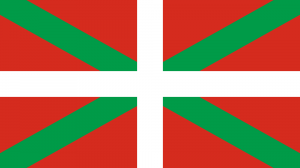Language/Basque/Grammar/Definite-and-Indefinite-Articles
| ◀️ Introducing Yourself — Previous Lesson | Next Lesson — Noun Gender and Number ▶️ |
Introduction[edit | edit source]
Welcome to the lesson on definite and indefinite articles in Basque! In this lesson, we will explore how to use these articles with singular and plural nouns. Understanding articles is crucial for building a solid foundation in Basque grammar, as they play a significant role in sentence formation and conveying meaning. So let's dive in and discover the nuances of definite and indefinite articles in Basque!
Definite Articles[edit | edit source]
Definite articles are used to refer to specific nouns that are known or have been previously mentioned. In Basque, there are two forms of definite articles: the singular "the" and the plural "the." Let's take a look at the following table to see how definite articles are used in Basque:
| Basque | Pronunciation | English |
|---|---|---|
| singular | hau | this |
| plural | hauek | these |
| singular | hura | that |
| plural | horiek | those |
| singular | honek | this (here) |
| plural | haiek | these (here) |
| singular | horrek | that (there) |
| plural | horiek | those (there) |
As you can see, the definite articles in Basque vary depending on the proximity of the noun to the speaker. "Hau" and "hauek" are used to refer to objects or people that are near the speaker, while "hura" and "horiek" are used for things that are farther away. "Honek" and "haiek" refer to objects or people that are close to the speaker, and "horrek" and "horiek" are used for items that are distant from both the speaker and the listener.
Let's look at some examples to understand the usage of definite articles in Basque:
- Hau da gela. (This is the room.)
- Hauek dira gure lagunak. (These are our friends.)
- Hura da etxea. (That is the house.)
- Horiek dira zure liburuak. (Those are your books.)
- Honek daude zure erantzunak. (These are your answers.)
- Haiek daude horrelakoak. (Those are like that.)
- Horrek daude hiriko dendak. (Those are the city's shops.)
In the above examples, you can see how the definite articles "hau," "hauek," "hura," "horiek," "honek," and "horrek" are used to refer to specific nouns in different contexts. Pay close attention to the changes in the definite articles based on proximity and number agreement.
Indefinite Articles[edit | edit source]
Indefinite articles are used to refer to non-specific or unknown nouns. In Basque, there are also two forms of indefinite articles: the singular "a/an" and the plural "some." Let's take a look at the following table to see how indefinite articles are used in Basque:
| Basque | Pronunciation | English |
|---|---|---|
| singular | bat | a/an |
| plural | batzuk | some |
Now, let's see some examples to understand the usage of indefinite articles in Basque:
- Nire lagun bat etorriko da. (A friend of mine will come.)
- Irakurle batzuk etorri dira. (Some readers have come.)
- Nire semeak bat gizona ikusi du. (My son has seen a man.)
- Ikasle batzuk egin dute ikerketa. (Some students have done the research.)
In the above examples, you can observe how the indefinite articles "bat" and "batzuk" are used to refer to non-specific or unknown nouns. Pay attention to the agreement of the indefinite articles with the number of the noun.
Cultural Insights[edit | edit source]
In the Basque culture, the use of definite and indefinite articles is influenced by the historical context and regional variations. In some dialects of Basque, such as the Bizkaian dialect, the definite article "haiek" is used as a general plural article, similar to the English "the." This usage differs from the standard Basque, where "haiek" is only used to refer to objects or people that are farther away.
Furthermore, the Basque language has a strong connection to the culture and identity of the Basque people. It is considered one of the oldest languages in Europe and is believed to have pre-Indo-European roots. Basque is also known for its complex grammar and agglutinative nature, which means that words are formed by adding affixes to a base word.
Exercises[edit | edit source]
Now, let's practice what we've learned! Choose the correct definite or indefinite article to complete each sentence:
1. ______ etxea dago hemen. (The house is here.) 2. ______ etxeak dira horiek. (Those are the houses.) 3. ______ lagun bat etorriko da. (A friend will come.) 4. ______ ikasleek egin dute ariketa. (The students have done the exercise.) 5. ______ irakurle batzuk etorri dira. (Some readers have come.)
Solutions: 1. Hau 2. Haiek 3. Bat 4. Ikasleek 5. Batzuk
Conclusion[edit | edit source]
Congratulations! You have successfully learned how to use definite and indefinite articles with singular and plural nouns in Basque. These articles are essential for constructing meaningful sentences and conveying specific or non-specific information. Remember to pay attention to proximity and number agreement when using definite and indefinite articles. Keep practicing and exploring the fascinating world of Basque grammar and culture!
Sources[edit | edit source]
Other Lessons[edit | edit source]
- Future Tense
- Adjectives
- Imperative Tense
- Conjunctions
- 0 to A1 Course
- Interrogative Words
- Gender
- Comparatives and Superlatives
- Negation
- Possessive Case in Basque
| ◀️ Introducing Yourself — Previous Lesson | Next Lesson — Noun Gender and Number ▶️ |

